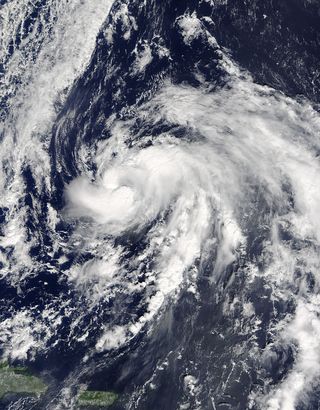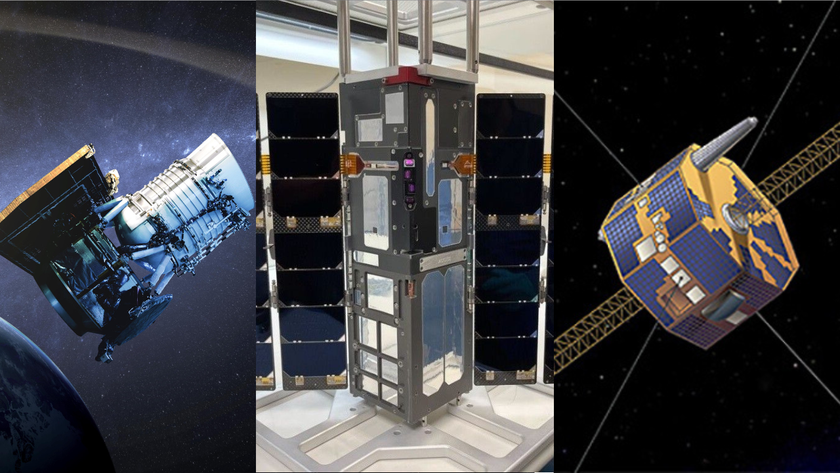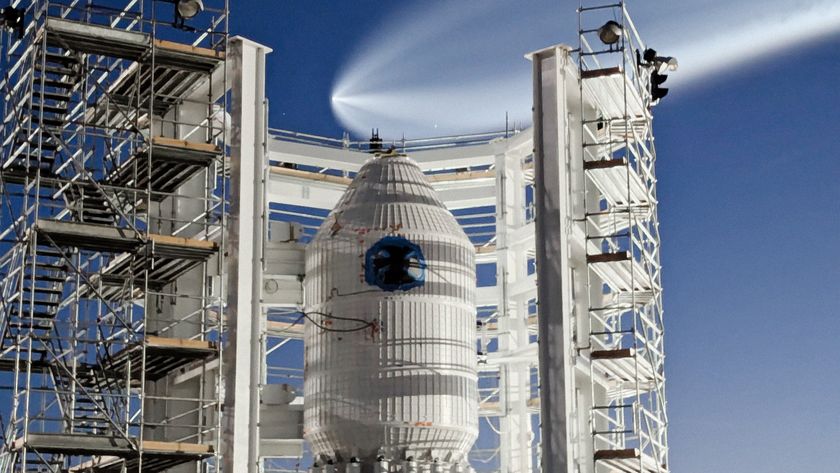Hurricane Nicole Delays Private Rocket Launch to No Earlier Than Sunday

Update for Sunday, Oct. 16 at 3 p.m. EDT: NASA and Orbtial ATK have delayed the Antares launch by 24 hours to Monday (Oct. 17) at 7:40 p.m. EDT (2340 GMT) due to a glitch with ground support equipment.
A cargo-supply mission scheduled to blast off to the International Space Station from NASA's Wallops Flight Facility in Virginia this Friday will happen no sooner than Sunday (Oct. 16) as Hurricane Nicole marches straight toward the rocket's tracking site in Bermuda.
NASA and Orbital ATK, a private spaceflight company contracted by NASA to fly unmanned resupply missions to the space station, currently have until Oct. 19 to try and launch Antares, and are working to extend the window, NASA spokesman Keith Koehler of Wallops Flight Facility told Space.com in an email. If they stick with the Sunday launch date, Antares is scheduled to lift off at 8:03 p.m. EDT (0003 Oct. 17), with a 5-minute launch window.
When NASA announced the delay on Tuesday (Oct. 11), Hurricane Nicole was still a tropical storm forming over the Atlantic Ocean. Later in the day, the storm was upgraded to a Category 1 hurricane. [Viewing Guide: How to See the Nighttime Antares Rocket Launch]

"The tracking station at Bermuda is required to conduct the Antares launch from Wallops," Steven Kremer, chief of the Wallops Range and Mission Management Office, said in a statement. "The ability to support a launch will depend on the impact the storm has on not only our systems, but also the overall Bermuda infrastructure."
This particular resupply mission launch has faced several delays since its original target launch date in July, but previous delays were not weather-related. The upcoming launch will be the first time that Orbital ATK's Antares rocket will fly to the space station since a catastrophic explosion during an attempted launch in 2014.
NASA TV will broadcast live footage of the launch, and pre-launch broadcasts will begin on Saturday (Oct. 15) at 4 p.m. EDT if the Sunday launch date remains unchanged.
Get the Space.com Newsletter
Breaking space news, the latest updates on rocket launches, skywatching events and more!
Email Hanneke Weitering at hweitering@space.com or follow her @hannekescience. Follow us @Spacedotcom, Facebookand Google+. Original article on Space.com.
Join our Space Forums to keep talking space on the latest missions, night sky and more! And if you have a news tip, correction or comment, let us know at: community@space.com.

Hanneke Weitering is a multimedia journalist in the Pacific Northwest reporting on the future of aviation at FutureFlight.aero and Aviation International News and was previously the Editor for Spaceflight and Astronomy news here at Space.com. As an editor with over 10 years of experience in science journalism she has previously written for Scholastic Classroom Magazines, MedPage Today and The Joint Institute for Computational Sciences at Oak Ridge National Laboratory. After studying physics at the University of Tennessee in her hometown of Knoxville, she earned her graduate degree in Science, Health and Environmental Reporting (SHERP) from New York University. Hanneke joined the Space.com team in 2016 as a staff writer and producer, covering topics including spaceflight and astronomy. She currently lives in Seattle, home of the Space Needle, with her cat and two snakes. In her spare time, Hanneke enjoys exploring the Rocky Mountains, basking in nature and looking for dark skies to gaze at the cosmos.


